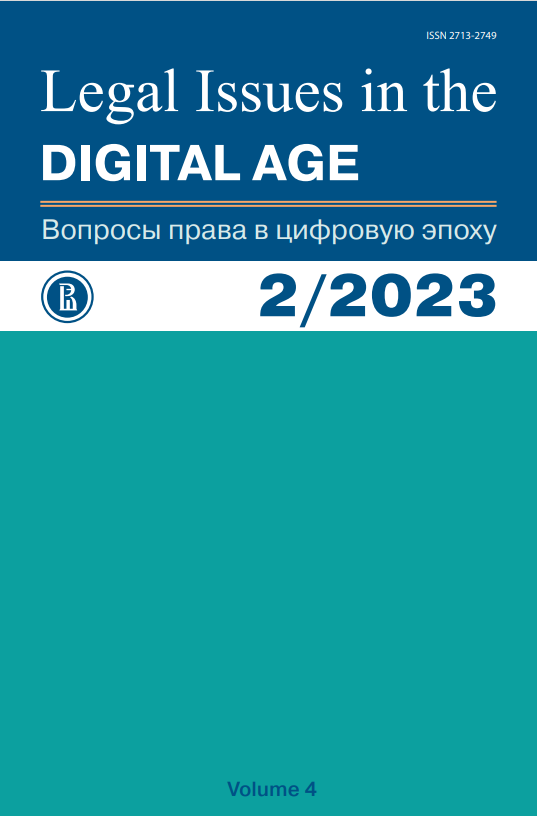Talent Acquisitions and Lock-in Agreements: Antitrust Concerns
Abstract
In recent years companies are paying more and more attention to the promising ideas and researchers within their fields. In various pharmaceutical sectors, most part of the firms is buying talent but not a customer base and products. When a company is acquiring a controlling stake in a smaller research and development-focused firm, the vendor is often the leading researcher and she are retained by non-compete clauses, confidentiality clauses and other forms of obligations that will keep the person working exclusively for the target. Acquisitions and strategic collaborations with far-reaching lock-in effects have suffered from underenforcement of competition law, and that neither United States
antitrust agencies nor the European Union Commission, nor the competition authorities of the BRICS countries have sufficiently addressed the innovation concerns raised in these regards. Our proposal, which we admit requires further analysis and development,
is to view researchers and key individuals as innovation assets — and to recognise these assets on the input markets or R&D markets that they de facto are active on. This would enable analysis of whether large corporations are essentially vacuuming the relevant research and development markets and creating dead zones devoid of any new ideas.
References
Arnold K. et al. (2002) Value Drivers in Licensing Deals. Nature Biotechnology, vol. 20, no. 11, pp. 1085–1089. DOI: https://doi.org/10.1038/nbt1102-1085
Castanias R., Helfat C. (1991) Managerial Resources and Rents. Journal of Management, vol. 17, no. 1, pp. 155–171. DOI: https://doi.org/10.1177/014920639101700110
Chesbrough H. (2003) Open Innovation: The New Imperative for Creating and Profiting from Technology. Boston: Harvard Business School Press, 222 p.
Coff R. (1997) Human Assets and Management Dilemmas: Coping with Hazards on the Road to Resource-Based Theory. Academy of Management Review, vol. 22, no. 2, pp. 374–402. DOI: https://doi.org/10.5465/amr.1997.9707154063
Coyle J., Polsky G. (2013) Acquire-Hiring. Duke Law Journal, vol. 63, no. 2, pp. 281–346.
Cunningham C. et al. (2020) Killer Acquisitions. Journal of Political Economy, vol. 129, no. 3, pp. 649–702. 7. De Jong G., Klein R. (2009) The Content and Role of Formal Contracts in High-Tech Alliances. Innovation: Management, Policy&Practice, vol.11, no. 1, pp. 44–59. DOI: https://doi.org/10.5172/impp.453.11.1.44
Domeij B. (2016) Från anställd till konkurrent. Stockholm: Wolters Klu-wer, 473 p.
Drucker P. (1999) Knowledge-Worker Productivity: The Biggest Challenge. California Management Review, vol. 41, no. 2, pp. 79–94. DOI: https://doi.org/10.2307/41165987
Federico G., Morton F., Shapiro C. (2019) Antitrust and Innovation: Welcoming and Protecting Disruption, Innovation Policy and the Econo-my. Wash.: National Bureau of Economic Research, pp. 1–50. DOI: https://doi.org/10.3386/w26005
Garnier J. (2008) Rebuilding the R&D Engine in Big Pharma. Harvard Business Review, vol. 86, no. 5, pp. 68–70.
Gautier A., Lamesch J. (2020) Mergers in the Digital Economy. CES info Working Paper Series. No. 8056, pp. 1–34. DOI: https://doi.org/10.2139/ssrn.3529012
Haitao L. et al. (2011) Investing in Talents: Manager Characteristics and Hedge Fund Performances. The Journal of Financial and Quantitative Analysis, vol. 46, no. 1, pp. 59–82. DOI: https://doi.org/10.1017/S0022109010000748
Hansen J., Lundgren Ch. (2014) Köp og salg af virksomheder. Køben-havn: Nyt Juridisk Forlag.
Hatch N., Dyer J. (2004) Human Capital and Learning as a Source of Sustainable Competitive Advantage. Strategic Management Journal, vol. 25, no. 12, pp. 1155–1178. DOI: https://doi.org/10.1002/smj.421
Lovells H. (2020) Key Takeaways from the FTC’s Non-Compete Workshop. Antitrust, Competition and Economic Regulation. Available at: https://www.hoganlovells.com/en/publications/~/media/8516b3f2a7d9486eb8be311ce44b9633.ashx (accessed: 19.12.2022)
Marinescu I., Hovenkamp H. (2019) Anticompetitive Mergers in Labor Markets. Legal Scholarship Depository, pp. 1031–1063. Available at: https://scholarship.law.upenn.edu/(accessed: 30.11.2022)
Marx M., Timmermans B. (2017) Hiring Molecules, Not Atoms: Co-mobility and Wages. Organization Science, vol. 28, no. 6, pp. 1115–1133. DOI: https://doi.org/10.1287/orsc.2017.1155
Naidu S., Posner E., Weyl E. (2018) Antitrust Remedies for Labour Market Power. Harvard Law Review, vol. 132, pp. 537–601. DOI: https://doi.org/10.2139/ssrn.3129221
Norbäck P., Olofsson Ch., Persson L. (2020) Acquisitions for Sleep. The B.E. Journal of Economic Analysis & Policy, vol. 20, no. 2, p.13. DOI: https://doi.org/10.1515/bejeap-2019-0021
Norbäck P., Persson L, Svensson R. (2016) Creative Destruction and Productive Pre-emptive Acquisitions. Journal of Business Venturing,vol. 31, no. 3, pp. 326–343. DOI: https://doi.org/10.1016/j.jbusvent.2016.03.001
Norbäck P. et al. (2019) Verifying High Quality: Entry for Sale’ IFN Working Paper Institute för Näringslivsforskning, p. 1186. DOI: https://doi.org/10.2139/ssrn.3632370
Parker G., Petropoulos G., Van Alstyne M. (2021) Platform mergers and antitrust. Industrial and Corporate Change, vol. 30, no. 5, pp. 1307–1336. DOI: https://doi.org/10.1093/icc/dtab048
Posner E., Volpin C. (2020) Labour Monopsony and European Competition Law. Available at: https://www.concurrences.com/en/re-view/issues/no-4-2020/droit-et-economie/eric-a-posner(accessed: 22.12.2022)
Rizzo A. (2021) Digital Mergers: Evidence from the Venture Capital Industry Suggests that Antitrust Intervention Might be Needed. Journal of European Competition Law & Practice, vol. 12, no. 1, pp. 4–13. DOI: https://doi.org/10.1093/jeclap/lpaa051
Robinson D., Stuart T. (2007) Financial Contracting in Biotech Strategic Alliances. Journal of Law and Economics, vol. 50, pp. 559–596. DOI: https://doi.org/10.1086/519811
Selby J., Mayer K. (2013) Startup Firm Acquisitions as a Human Re-source Strategy for Innovation: The Acquire Phenomenon. Available at: https://mackinstitute.wharton.upenn.edu/wp-content/uploads/2013/04/Selby-Jaclyn-Mayer-Kyle_Startup-Firm-Acquisitions-as-a-Human-Resource-Strategy-for-Innovation-The-Acqhire-Phenomenon.pdf (accessed: 03.12.2022) DOI: https://doi.org/10.5465/ambpp.2013.17109abstract
Starr E., Prescott J., Bishara N. (2021) Non-competences in the US Labor Force. Journal of Law and Economics. Available at: https://ssrn.com/abstract=2625714 (accessed: 24.12.2022)
Zingales L. (2000) In Search of New Foundations. National Bureau of Economic Research. Working Paper No. 77-06, pp. 1-52. Available at: https://ssrn.com/abstract=232092 (accessed: 16.12.2022)
Authors who publish with this journal agree to the Licensing, Copyright, Open Access and Repository Policy.










